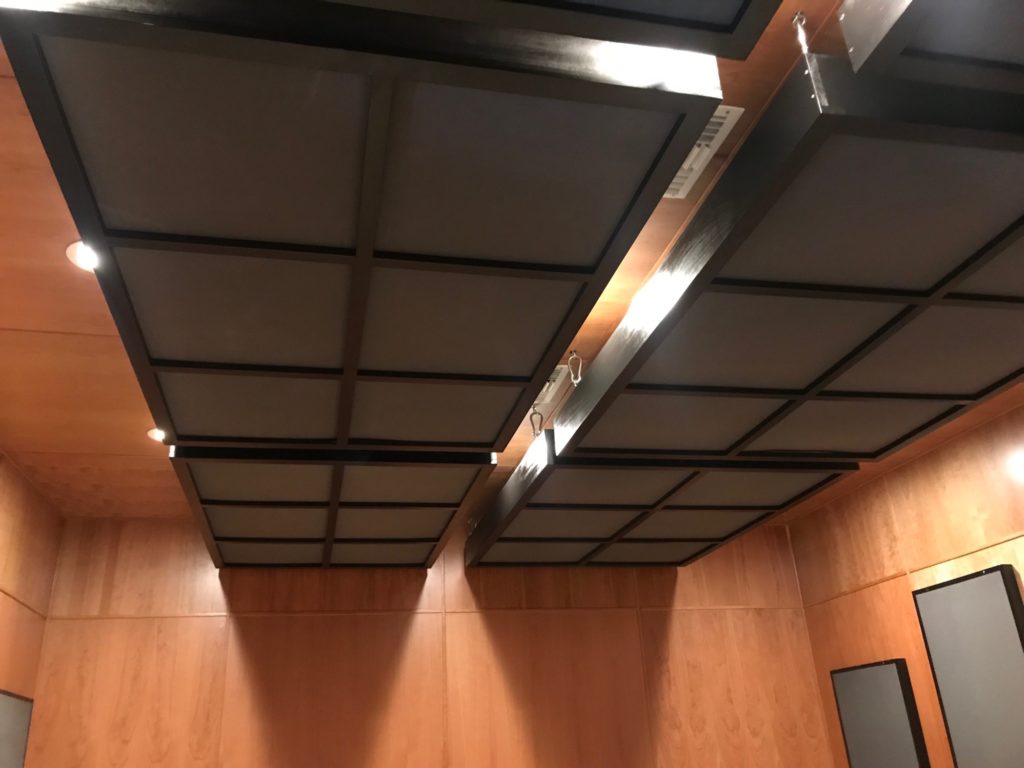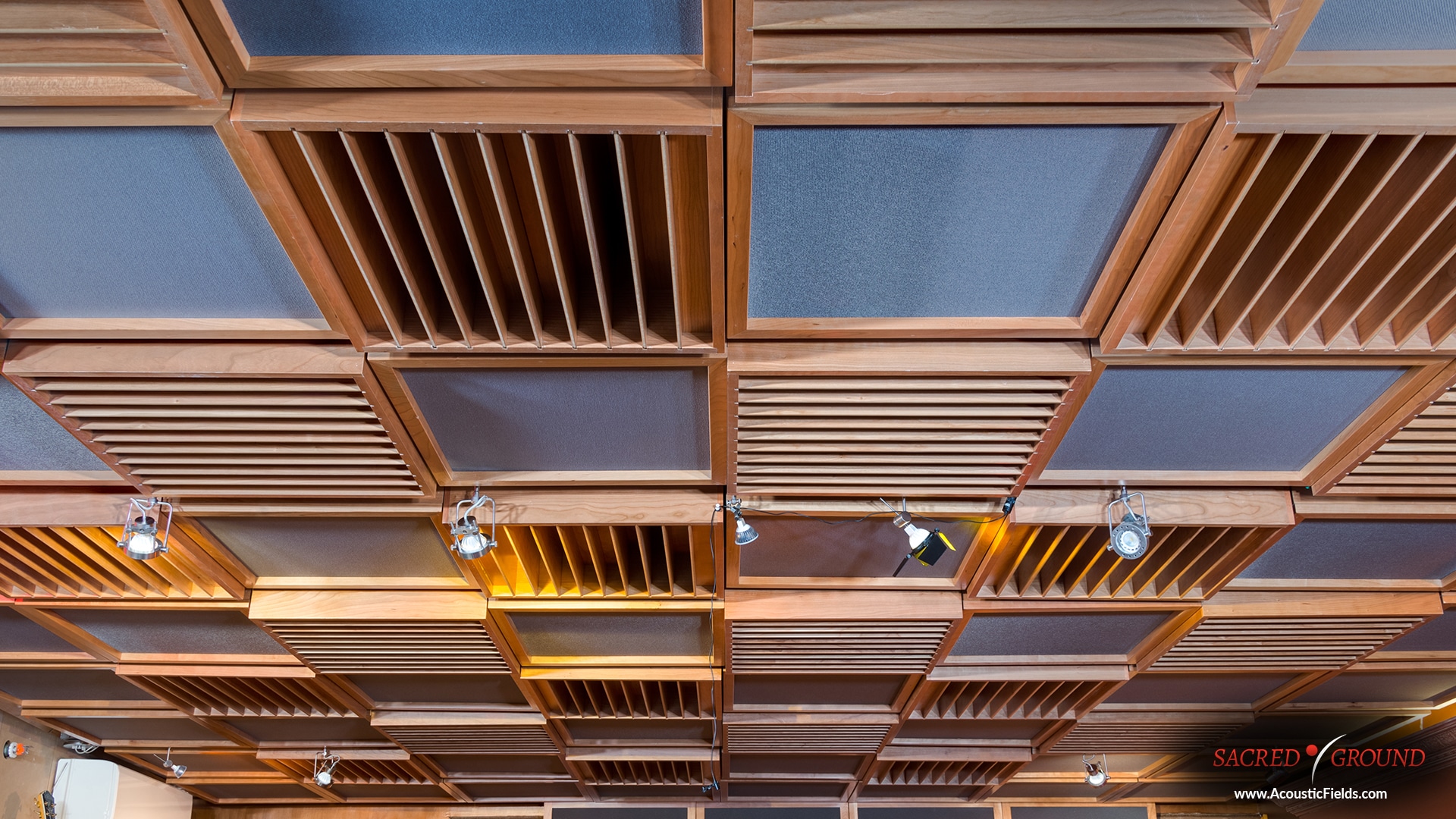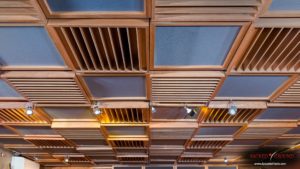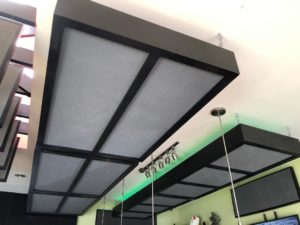This blog has been updated to reflect changes in acoustic ceiling treatment since its original posting. This blog was updated on 11/11/19
We have reflections off the ceiling from our monitors or speakers that strike the ceiling. The ceiling is often the closest surface in most rooms to us. It is the smallest dimension of the three we use for volume calculations when we do pressure mapping. I know we talk a lot about sidewall reflections because they control a lot of features within our sound stage. However, the floor and the ceiling are the reflections that arrive at our listening or monitoring positions first. We need to address the ceiling when it comes to reflections and low-frequency pressure.
Sound Pressure With Ceiling Heights
We have a lot of pressure in our rooms and the ceiling is a good place to put low-frequency absorption. The floor to ceiling dimension is the smallest of the three. Since it is the shortest of all dimensions, it produces the most low-frequency issues. We must remember from our modal definitions that modal issues such as axial modes are caused by two parallel surfaces. The issues created by our ceilings are also floor related. We must treat the surface areas that cause these problems. The only solution is to install the proper low-frequency management technology along with the proper middle and high-frequency treatments.
Usage is Very Critical
What are our options for acoustic ceiling treatment? We have diffusion and absorption. Those are really our two choices. We can have low-frequency absorption and we can have middle and high-frequency absorption. We could have low-frequency absorption and we could have middle and high-frequency diffusion. All of these variables depend on room usage. Every usage within a room requires that the absorption and diffusion treatments be positioned as to type, amount, and position. The acronym TAP can be applied here. What is your usage?
Sound Absorption definition:
https://en.wikipedia.org/wiki/Absorption_(acoustics)
Sound Diffusion definition:
https://en.wikipedia.org/wiki/Diffusion_(acoustics)
Home Theater
If it’s a home theater room, we can go a couple of different ways with diffusion and absorption. First and foremost, we must deal with the low-frequency pressure issues within any room or any user. How much low-frequency absorption we use depends on room size, how much energy is in the room, how big the seating area is and a host of other variables. One of the best places to place low-frequency absorption is on the floor under the seats. Positioning low-frequency management technology under the seats allows it to be installed within the seating platform close to the people. This reduces pressure at the listening position which allows for better definition and clarity in our car crashes and explosions.

Acoustic Fields Foam Ceiling Treatment
Listening Room
In a listening room, we must follow the same guidelines as a home theater for low-frequency management. We must analyze the walls, floor, and ceiling to determine which pair of those surface areas are producing the low-frequency issues. Once we determine the frequency and amplitude of the issues along with the pair of surface areas that are producing the unwanted pressure we can apply absorption. Pressure management is critical in theaters due to the large amounts of energy produced by many sources. Diffusion can be considered if and only if all other frequencies issues have been managed correctly through absorption. Diffusion acts as a magnifying glass and will highlight those untreated issues. For personal listening rooms, we want to use diffusion on the front and rear walls and the ceiling.
Treatment Application in Control Room Environments
In a control room, we want to hear everything in the mix. The process is termed translation. The engineer wants to hear all the music and voice. He does not want to hear his room. In a control room, absorption is the way to go for the sidewalls and front wall. Absorption manages the reflections from these surfaces and reduces their strength so they do not interfere with the direct energy from our speakers. Managing the time signature of the front wall and side walls is critical.
Ceiling Reflections
Ceiling reflections in control rooms are managed using absorption or diffusion. The choice between the two depends on the distance from the floor to the ceiling. It also depends on the size of the speakers and the ceiling height. If you have the distance then diffusion can be used. If you do not have enough distance between the ceiling and your ears, then we must use absorption for middle and high – frequency issues. Our goal is to reduce the impact of all reflections so they do not enter our mixes.
Rear Wall Diffusion
Rear wall diffusion in a control room reduces that slap back reflection from the rear wall. This reflection does not want to be in our mixes. We can use quadratic diffusion to reduce that reflection from the rear wall in our control rooms. Diffusion must be selected using the correct prime number to match the distances from the rear wall to the listening position. Every diffuser has a frequency response just like a speaker. Care must be taken to include the proper distances to allow the diffusion “speaker” to spread its energy out and minimize the impact of reflections at the monitoring position.
- Quadratic Diffusion Acoustic Ceiling Treatment
- Sound Absorption Acoustic Ceiling Treatment
Thanks
Dennis









